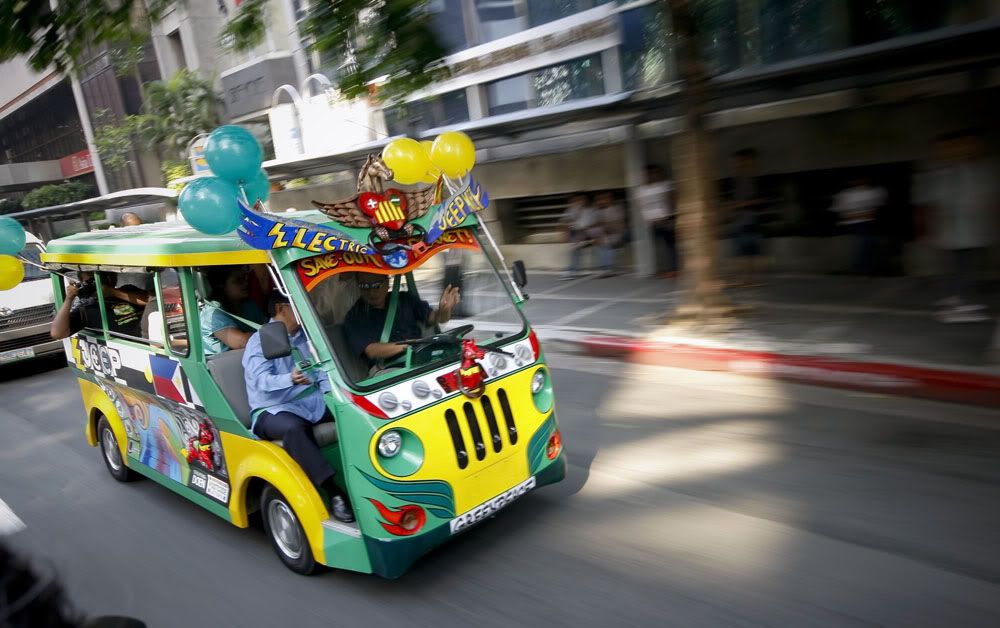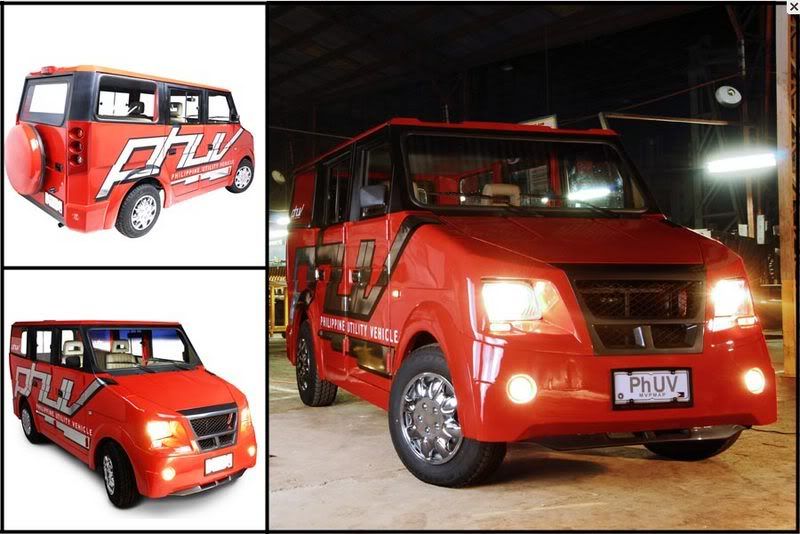Results 1 to 10 of 153
-
August 14th, 2009 10:04 AM #1Working for the development of a new type of jeepneys[SIZE=3]PHUV, Inc.[/SIZE]
[SIZE=4]MVPMAP[/SIZE] on the other hand, through [SIZE=4]PhUV Inc.[/SIZE], is fortifying its position as the pioneering organization that will not only help rekindle the Philippine auto manufacturing industry but will also push for sustainable and environment-friendly communities.
"This advocacy started when we locally designed in 2006 and developed in 2007 the Philippine Utility Vehicle (PhUV) to prove that given the opportunity and the resources, the Pinoy engineer can design and build a truly Pinoy vehicle.
The PhUV Program has been in the Investment Priority Plan (IPP) of the Board of Investments since 2007.
This e-jeepney is just a reincarnation of the PhUV as a pioneering endeavor under the IPP", Mr. Raquelsantos says.
MVPMAP members are excited to supply their locally-assembled parts to both the e-jeepneys and the e-trikes for its forthcoming mass production.
"This will ensure the availability of after-sales parts and service for the vehicle. Even Pres. Arroyo has shown much interest in the electric vehicle program when we and our Chinese partners presented this to her in China.
Things are looking brighter and this we hope will finally put the Philippines at the forefront of electric vehicle development in this part of the globe", he concludes.
PhUV Inc. is the first to locally design, fabricate, assemble and actually put on the road a locally-assembled electric vehicle, the e-jeepney.

The Logo of MVPMAP
Source: Press Release, December 2008, Enterprise

-
-
August 14th, 2009 10:14 AM #3
E-jeepneys of PHUV, Inc.

courtesy of Greenpeace southeast asia
The LTO will issue orange plates for these environment-friendly vehicles which are now classified as low speed vehicles with a maximum speed of 60 kilometers per hour.
E-jeepneys cost 625,000 pesos a unit, while reconditioned diesel engine jeepneys cost from 700,000 to 800,000 pesos, depending on how many passengers it can carry.
From Trapik.com posted 3/2009
-
August 14th, 2009 10:29 AM #4
First things first. Find a production method which would give finished vehicles curves. What is the point of trying to push PHUV if all you will produce are vehicles which look like cardboard boxes on wheels?

-
-
August 14th, 2009 10:56 AM #6
-
August 14th, 2009 02:48 PM #7
Hmmmm, indeed, the Model T is a cardboard box with proper doors.....


Anyway, the e-jeepney still looks better than this..

Last edited by jpdm; August 14th, 2009 at 03:01 PM.
-
August 14th, 2009 04:07 PM #8
-
-
September 1st, 2009 10:28 PM #10
You forget...
Would you want to produce and dispose of toxic waste from making and disposing lead-acid batteries. And those plastic resin body shells also require some liters of old dinosaur to manufacture them as well.
That old jeepney can be as clean or even cleaner if you just use appropriate tech like converting the surplus diesel engine to a refurbished gasoline engine with Auto-LPG conversion kit. What you end up is a jeepney that have emissions to meet and beat the clean air requirements for cars.
The plus side, no need to have new infrastructure set up like a battery charging station. Heck! ... where does the electricity to charge the batteries come from anyway? Oil and coal burning powerplants, that's where.
So you argue, "solar!"...
Yes, solar can be used BUT it is pricey and you need a very big (read: very expensive) solar array to charge a single e-jeepney's battery pack. How do you charge the other battery packs then?
With regular jeepneys running on Auto-LPG, you don't need to setup new facilities since it's already there servicing taxi cabs and private cars as well. Given LPG is cheaper than gasoline and diesel, it pays for itself in fuel cost savings.




 Reply With Quote
Reply With Quote








Blue-labeled Motolite Gold are factory-supplied OEM batteries with only 1 year warranty.
Cheaper brands than Motolite but reliable as well